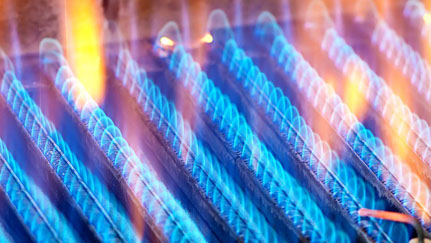Loading...
Carbon monoxide poisoning
Important safety tips to avoid carbon monoxide poisoning

Carbon monoxide (CO) poisoning is a more common and deadly problem than you may think. Roughly 500 people die and 15,000 are sickened every year from it, according to the Centers for Disease Control (CDC), and nearly all could have been easily prevented. Everyone is at risk for CO poisoning. Infants, the elderly, people with chronic heart disease, anemia, or breathing problems are more likely to get sick from CO.
Carbon monoxide is a colorless, odorless gas that you can’t see or smell. In residential settings the most common sources of carbon monoxide poisoning are from faulty furnaces or other heating appliances, portable generators, water heaters, clothes dryers, or cars left running in garages. CO poisoning is more common in winter months than any other time of year.
When exposed to carbon monoxide the initial symptoms are flu-like, but without a fever. They may include dull headache, weakness, dizziness and nausea. The symptoms of low-level carbon monoxide poisoning are so easily mistaken for those of the common cold, flu or exhaustion, that proper diagnosis can be delayed. Because of this, be sure to see your physician about persistent flu-like symptoms, chronic fatigue or generalized depression. When levels of CO are high, poisoning can result in vomiting, shortness of breath, confusion, blurred vision and loss of consciousness. If the exposure continues, the person may lose consciousness, experience a seizure or suffer respiratory failure and cardiac arrest.
How to avoid sources of carbon monoxide
- Have your heating systems inspected annually before the fall and winter months to ensure they are operating properly and have no leaks.
- Have your wood-burning fireplace chimneys inspected and cleaned each year by a chimney expert.
- Don’t use a grill, generator or camping stove inside your home, garage or near a window.
- Remove your vehicle from the garage immediately after starting it if you need to warm it up before driving. Don’t leave a car, SUV or motorcycle engine running inside a garage, even if the doors are open.
- Make sure outside vents for the dryer, furnace, stove and fireplace are clear of snow and other debris.
Install carbon monoxide alarms
- Carbon monoxide alarms are not substitutes for smoke alarms –both are required to properly protect your family. Some manufactures offer combination smoke and carbon monoxide alarms.
- Make sure your home has a carbon monoxide alarm. Ideally a permanently-installed CO detector is integrated with your central station monitored alarm system. At a minimum, use battery powered or battery-backup CO detectors.
- Place carbon monoxide detectors on every level of your home, especially near sleeping areas. Keep them at least 15 feet away from fuel-burning appliances.
- Test CO alarms regularly, as you would smoke alarms. Replace batteries annually. Replace detectors every five to seven years depending on the manufacturer’s label.
What to do if carbon monoxide poisoning has occurred
- Immediately move the person away from the area into fresh air.
- Call 911 for help, even if the person seems OK after a few minutes. Medical attention is a must for cases of CO poisoning.
- Turn off the source of exhaust fumes if safe to do so.
We offer this information to assist you in making decisions that can help mitigate your risk. While we cannot address every possible scenario or guarantee these tips will work for you, our goal is to support your efforts to protect yourself and your family. For more information, please visit nationwide.com/privateclient or contact your Nationwide Private Client agent.